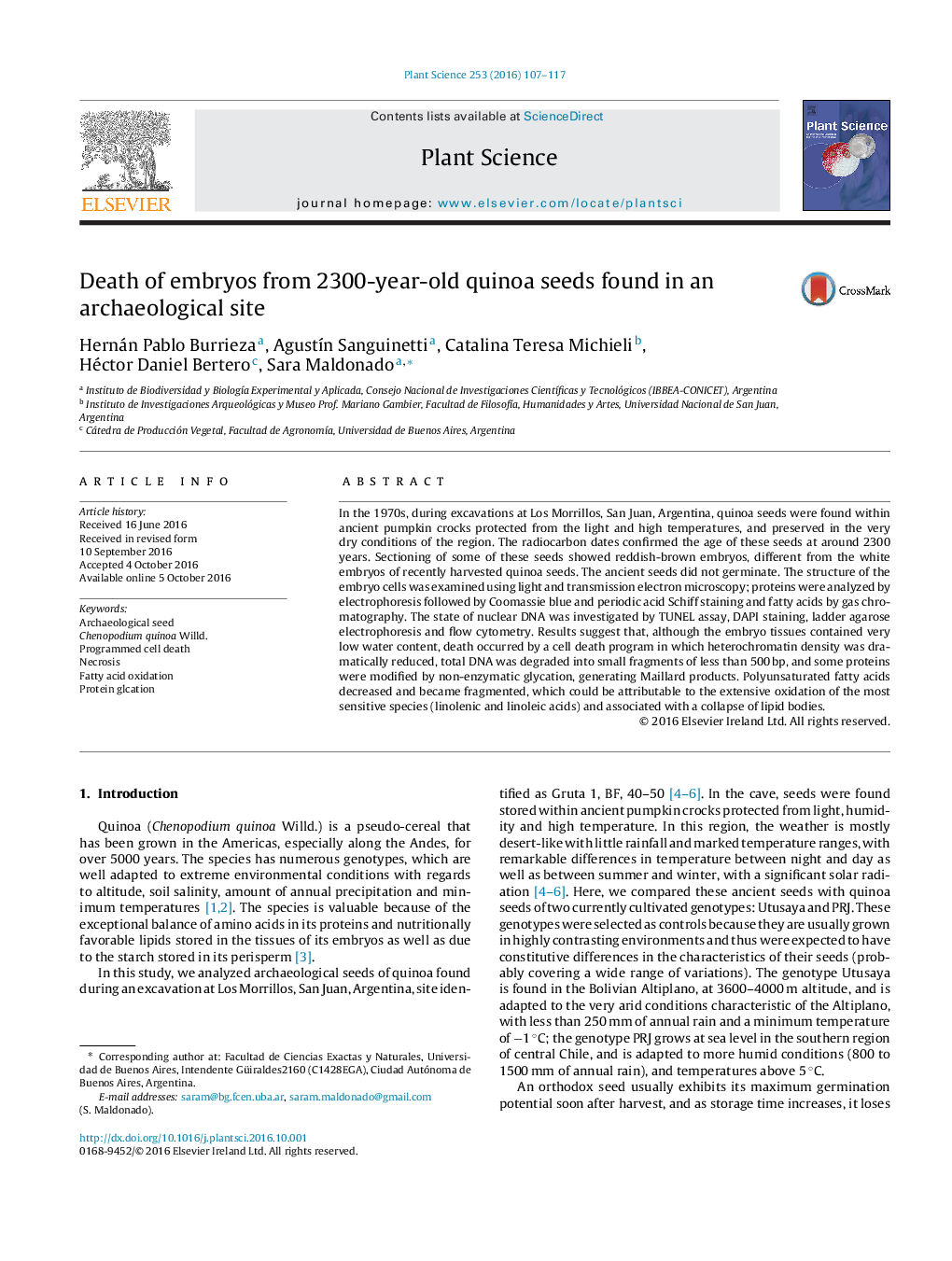| کد مقاله | کد نشریه | سال انتشار | مقاله انگلیسی | نسخه تمام متن |
|---|---|---|---|---|
| 5515884 | 1542036 | 2016 | 11 صفحه PDF | دانلود رایگان |
In the 1970s, during excavations at Los Morrillos, San Juan, Argentina, quinoa seeds were found within ancient pumpkin crocks protected from the light and high temperatures, and preserved in the very dry conditions of the region. The radiocarbon dates confirmed the age of these seeds at around 2300 years. Sectioning of some of these seeds showed reddish-brown embryos, different from the white embryos of recently harvested quinoa seeds. The ancient seeds did not germinate. The structure of the embryo cells was examined using light and transmission electron microscopy; proteins were analyzed by electrophoresis followed by Coomassie blue and periodic acid Schiff staining and fatty acids by gas chromatography. The state of nuclear DNA was investigated by TUNEL assay, DAPI staining, ladder agarose electrophoresis and flow cytometry. Results suggest that, although the embryo tissues contained very low water content, death occurred by a cell death program in which heterochromatin density was dramatically reduced, total DNA was degraded into small fragments of less than 500Â bp, and some proteins were modified by non-enzymatic glycation, generating Maillard products. Polyunsaturated fatty acids decreased and became fragmented, which could be attributable to the extensive oxidation of the most sensitive species (linolenic and linoleic acids) and associated with a collapse of lipid bodies.
Journal: Plant Science - Volume 253, December 2016, Pages 107-117
